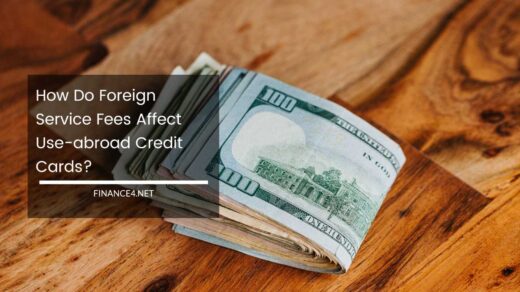Consolidate Debt with Bad Credit: Your Guide
Conquering the Mountain of Debt: A Comprehensive Guide to Unsecured Debt Consolidation Loans for Bad Credit
The weight of bad credit can feel like a heavy burden, hindering your ability to access financial products and achieve your financial goals. However, for those struggling with multiple debts, there’s a beacon of hope: unsecured debt consolidation loans.
This guide delves deep into this strategy, exploring its advantages, considerations, and how it can pave the way for a more secure financial future, even with a less-than-perfect credit history.
The Shifting Landscape of Debt Consolidation: From Exclusion to Opportunity
For many individuals burdened by bad credit, unsecured loans for debt consolidation were once a distant dream. Traditional lenders heavily relied on credit scores, effectively shutting out those with blemishes on their reports. However, the financial landscape has undergone a significant transformation.
Lenders are now more receptive to considering a borrower’s entire financial profile. This includes factors like employment stability, income stream, and debt-to-income ratio (DTI). This shift in lending practices has opened doors for those with bad credit to explore debt consolidation options.
Taking the First Steps: Crafting a Solid Plan and Finding the Right Lender
Before embarking on your debt consolidation journey, a clear understanding of your financial situation is vital. Here’s how to get started:
- Calculate Your Total Debt: Meticulously list out all your outstanding debts, including credit card balances, personal loans, and medical bills. Calculate the total sum required to consolidate these debts. This will determine the loan amount you need to seek.
- Review Your Credit Report: Obtain a copy of your credit report from all three major bureaus (Experian, Equifax, and TransUnion). Scrutinize the report for any errors or inaccuracies that might be negatively impacting your credit score. Dispute any discrepancies you find to improve your creditworthiness.
- Develop a Budget: Creating a realistic budget will help you determine how much you can comfortably allocate towards your monthly loan payment. This will be crucial when choosing a loan with an appropriate repayment term.
Finding the Perfect Lender: Leveraging Technology and Comparing Options
While independent research can be beneficial, consider utilizing online loan comparison services. These platforms leverage sophisticated algorithms to scour the market and identify lenders who cater to borrowers with bad credit. Here’s how they can streamline your search:
- Streamlined Applications: Instead of submitting separate applications to multiple lenders, these services allow you to submit a single application that gets distributed to suitable lenders. This saves you time and effort.
- Pre-approval with Soft Inquiries: Many online platforms utilize soft credit inquiries that don’t negatively impact your credit score. This allows you to pre-qualify for loans and view potential interest rates without harming your creditworthiness.
- Customization and Transparency: Reputable loan comparison services provide customizable filters to narrow down your search based on factors like loan amount, interest rate range, and repayment terms. This allows you to find a loan that aligns perfectly with your financial needs and goals.
Beyond the Credit Score: A Holistic Approach to Loan Eligibility
A bad credit score doesn’t automatically disqualify you from obtaining an unsecured debt consolidation loan. Lenders often consider a broader range of factors when evaluating loan applications. Here are some key aspects that can influence your eligibility:
- Employment Status: Having a stable source of income with a consistent track record demonstrates your ability to repay the loan.
- Debt-to-Income Ratio (DTI): This ratio compares your total monthly debt obligations to your gross monthly income. A lower DTI indicates a higher capacity to manage additional debt, making you a more attractive borrower.
- Income Stream: The consistency and predictability of your income play a significant role. Reliable income sources like a full-time job with a reputable company are viewed favorably by lenders.
- Alternative Credit History: If you have a history of making on-time payments for rent, utilities, or phone bills, this can be used as evidence of your responsible financial behavior and strengthen your loan application.
Understanding Unsecured Loans: Weighing the Pros and Cons
While unsecured loans for bad credit consolidation may come with higher interest rates compared to traditional loans, they offer a distinct advantage: no collateral. This means you won’t risk losing valuable assets like a car or house if you encounter repayment difficulties. Here’s a breakdown of the pros and cons:
Pros:
- No Collateral Required: You don’t have to put any assets at risk to obtain the loan.
- Streamlined Application Process: The application process is generally faster and simpler compared to secured loans.
- Improved Cash Flow: By consolidating multiple debts into a single payment, you’ll free up additional cash flow that can be allocated towards savings or other financial goals.
Cons :
- Higher Interest Rates: Unsecured loans for bad credit typically carry higher interest rates due to the perceived higher risk associated with lending to borrowers with a less-than-perfect credit history. This can significantly increase the total cost of borrowing over the loan term.
- Shorter Repayment Terms: Lenders might offer shorter repayment terms for unsecured loans to mitigate their risk. While this can help you become debt-free faster, it also translates to higher monthly payments, which can strain your budget if not carefully managed.
- Temptation to Overspend: Consolidating your debt can create a false sense of security, potentially leading to increased spending on credit cards or acquiring new debt. It’s crucial to maintain responsible spending habits while paying off the consolidation loan.
Beyond Consolidation: Building a Solid Financial Future
Debt consolidation, while a powerful tool, is just the first step on your path to financial wellness. Here are some additional strategies to consider alongside your consolidation plan:
- Implement a Debt Repayment Plan: Develop a clear strategy for tackling your consolidated debt. Consider the snowball or avalanche methods to pay off your debts strategically. The snowball method prioritizes paying off the smallest debts first for a quick win and motivational boost, while the avalanche method focuses on paying off debts with the highest interest rates first to save money in the long run.
- Automate Your Payments: Set up automatic monthly payments to ensure you never miss a due date and incur late fees. This fosters discipline and keeps you on track with your repayment goals.
- Seek Credit Counseling: Consider consulting with a non-profit credit counseling agency. They can offer valuable guidance on budgeting, debt management, and credit repair strategies.
Final Thoughts: A Brighter Financial Horizon Awaits
Debt consolidation with an unsecured loan can be a viable option for those struggling with bad credit. By strategically utilizing this approach, combined with responsible financial habits and a commitment to debt repayment, you can break free from the burden of debt and build a secure financial future.
Remember, the road to financial wellness is a marathon, not a sprint. With dedication, informed decisions, and a proactive approach, you can achieve your financial goals and live a debt-free life.
Additional Tips:
- Negotiate with Creditors: Before resorting to a consolidation loan, attempt to negotiate lower interest rates directly with your existing creditors. Explain your situation and demonstrate your commitment to repayment.
- Explore Balance Transfer Cards: If you have good credit standing on at least one of your credit cards, consider a balance transfer card with a 0% introductory APR period. This can be a temporary solution to consolidate your high-interest debts and allow you to focus on paying them down without accruing additional interest during the introductory period. However, be mindful of the balance transfer fee and ensure you can pay off the transferred balance before the introductory period ends to avoid high regular APR charges.
- Beware of Predatory Lenders: Unfortunately, some lenders target borrowers with bad credit with predatory loan terms. Steer clear of loans with exorbitant interest rates, hidden fees, or short repayment terms that can trap you in a cycle of debt. Always research the lender thoroughly before signing any loan agreement.
By incorporating these additional strategies and remaining vigilant, you can navigate your debt consolidation journey with confidence and pave the way for a brighter financial future.




